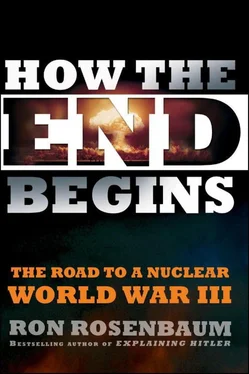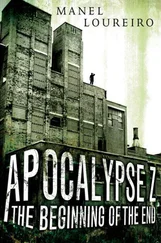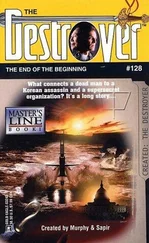These were the grails of the hawkish strategists and generals during the Cold War. They believed—and they believed the Soviets believed—that nuclear weapons should be treated just like other weapons, not merely for threat and deterrence but for use. They believed that a flexible response allowed us to calibrate their use in a way that would be more efficient militarily and more humane to civilians by focusing not on massive retaliation on whole cities, but on precise military-related targets.
Blair was arguing in public that controlling or calibrating nuclear war once it broke out was impossible, and that it was a delusion to think that communications links could allow command and control to be executed with war-fighting precision. His testimony caused a furor, not merely because of the substance of his words but because he had been allowed to say them at all. His critics included the Joint Chiefs of Staff, who, when they were given a copy of Blair’s report, immediately ordered that it be classified as “extremely sensitive information,” according to the New York Times.
Blair clearly was a Man Who Knew Too Much. A committee spokesman said “Blair was able to produce a report that is more sensitive than what it is based on because of his knowledge of the field and ability to synthesize information.”
The Pentagon said it was scandalous that he had been given security clearance to glimpse the SIOP. According to a March 25, 1985, report in Defense Week, “the security problem… arose because Blair’s synthesis of diverse secret pieces of the command and control puzzle allowed him to discuss the capabilities and vulnerabilities of the communications networks, warning systems and operating procedures that would dictate the course of a general nuclear war.”
There ensued a mad scramble to retrieve Blair’s report from the congressmen who commissioned it. Congress and the Pentagon went to war: the former said it had the right to know why it should spend billions fixing the command and control system; the latter was offended that its secrets had been aired in the first place. “Congress,” as Defense Week pointed out, “is being asked to allow billions of dollars to be spent in the next few years as the Pentagon improves its strategic command and control system in an effort to persuade the Soviet Union that a nuclear war could not be won simply by cutting off American decision makers from their retaliatory forces—a war strategy known as ‘decapitation.’” And yet Congress was being refused access to a report on the system’s defects.
“The report I wrote was reviewed by the Joint Chiefs of Staff and declared so sensitive that all the copies had to be recalled from Congress to the Pentagon,” Blair told me, “and they took it away from all the civilians including the assistant secretary of defense for command and control.”
“The guy in charge wasn’t allowed to read a report on his own operation?” I asked him.
“He didn’t have access.”
“Did they get it all back?”
“Well they did, but then some congressman found this out and got really pissed off and tried to get them back again and had hearings about that.”
The comic tug-of-war ended up obscuring the fact that Blair had put the pieces together and discovered the system’s fundamental defects. Actually it would be more comic if the system’s same defects were not inherent to the system we use now, as Blair maintains.
Blair never set out to become a nuclear missileer and later prophet of Zero. “I got a low draft number,” he told me. As a result he decided to enlist in the Air Force rather than get shipped off as a draftee to Vietnam and after a quick trip through Officer Candidate School he wound up in Omaha. He soon found himself in the thick of nuclear strategy intrigue. “I was assigned to a reconnaissance unit and was actually an aide to the wing commander of the unit that flew these secret missions mainly around the Soviet Union.”
These reconnaissance missions went under the code name Rivet Joint and involved RC-135 jets probing the electronic, radar, and satellite defenses of Russian airspace.
These were delicate, dangerous, provocative, and sometimes disastrous missions. “Our unit had lost a big plane in like 1960 or 1961, something like that. Got shot down in the Baltic or the Bering Sea. And these were very secret missions. A lot of them were directed by the National Security Agency right here and others were being run at the direction of the Strategic Air Command. But my unit flew those reconnaissance missions about China and the Soviet Union. Because China was also in SIOP.”
Blair says the risky reconnaissance flights of the type that his unit made at the height of the Cold War still go on for the purpose of feeding data on the location and range of Russian coastal radar. “I periodically go out to Omaha and talk to crews of the Rivet Joint [162]project, the RC-135 reconnaissance flights, and I’m always surprised that we still do that. If you go out there you may just bump into a crew that’s just come back from a mission to the northern border of Russia to try to identify holes in the radar through which we could fly our strategic bombers to drop nuclear bombs in the event of war with Russia.”
This is the post–Cold War twenty-first century. “We’re still looking for—?”
“The gaps, the corridors to fly the bombers in so they won’t get shot down with cruise missiles.”
He cites the Chinese interception of one of these recon planes, which was forced down and the crew held captive. [163]Things like that happened to these missions back when he was on duty. “We had the occasional incident. If you go back far enough there are a lot of serious problems in the 1950s and 1960s with planes literally being shot down in these interactions.”
“Is that true?”
“Oh yeah. There were lots of planes that were shot down. Loss of life. We didn’t shoot their bombers down, but they shot our reconnaissance aircraft down. I’m always surprised that we still do that,” he said of the RC-135 flights.
“In other words we’re still looking for an edge in a nuclear war with Russia?”
“We never brought our bombers right up to their coasts. Our bombers usually went to their fail-safe points, which is the point at which Soviet radar would pick them up. And so just before they got to that point they would turn back. We didn’t want to light up the Soviet Union’s air defense system and have them see a lot of bombers headed their way.”
Except we did, at least once. [164]Jeremi Suri reported in Wired the declassified records of 1969’s Operation Giant Lance, which Nixon and Kissinger sent large numbers of nuclear-equipped B-52 bombers flying toward Soviet airspace past the fail-safe points. The mission was purportedly meant to validate Kissinger’s “Madman” theory of nuclear strategy: in order to make the strategy of deterrence more credible—intimidate the Soviets over Vietnam—they needed to convince them the commander-in-chief is crazy enough to start a nuclear war.
“So our bombers kept their distance,” Blair continues, “but our reconnaissance aircraft got really close, and that’s where you get a lot of these encounters. And there were major U.S. reconnaissance planes shot down with loss of life back in the 1950s and early 1960s. And then the norms evolved and basically it became a kind of cat-and-mouse game for everybody, except during a few periods of tension like in 1983 when the Soviets shot down the KAL [Korean Air Lines civilian] airliner. They thought it was our RC-135, just a sort of Rivet Joint plane.” I found myself thinking about the seventy or more NORAD and NATO jet intercepts of Putin’s strategic bomber flights in that past year. How many more would it take before a similar incident blew up?
Читать дальше











